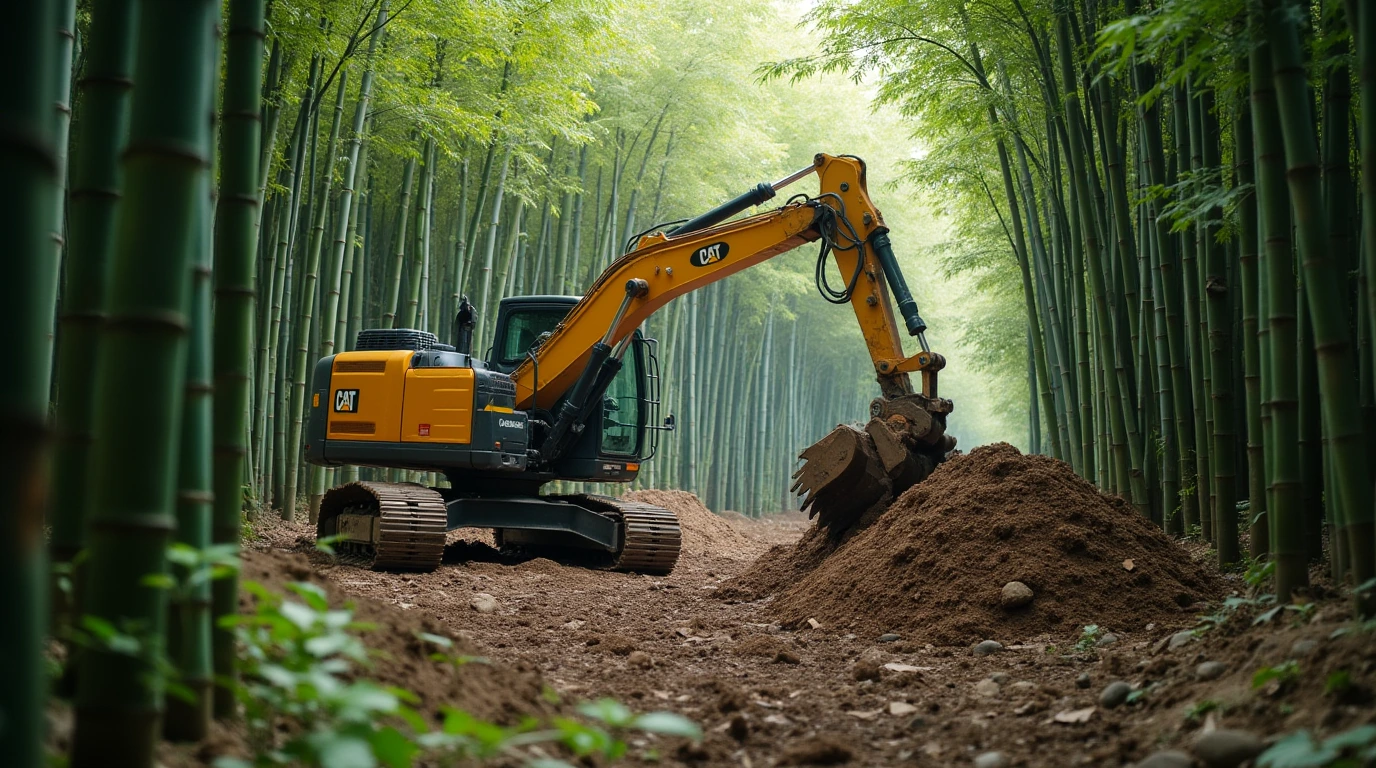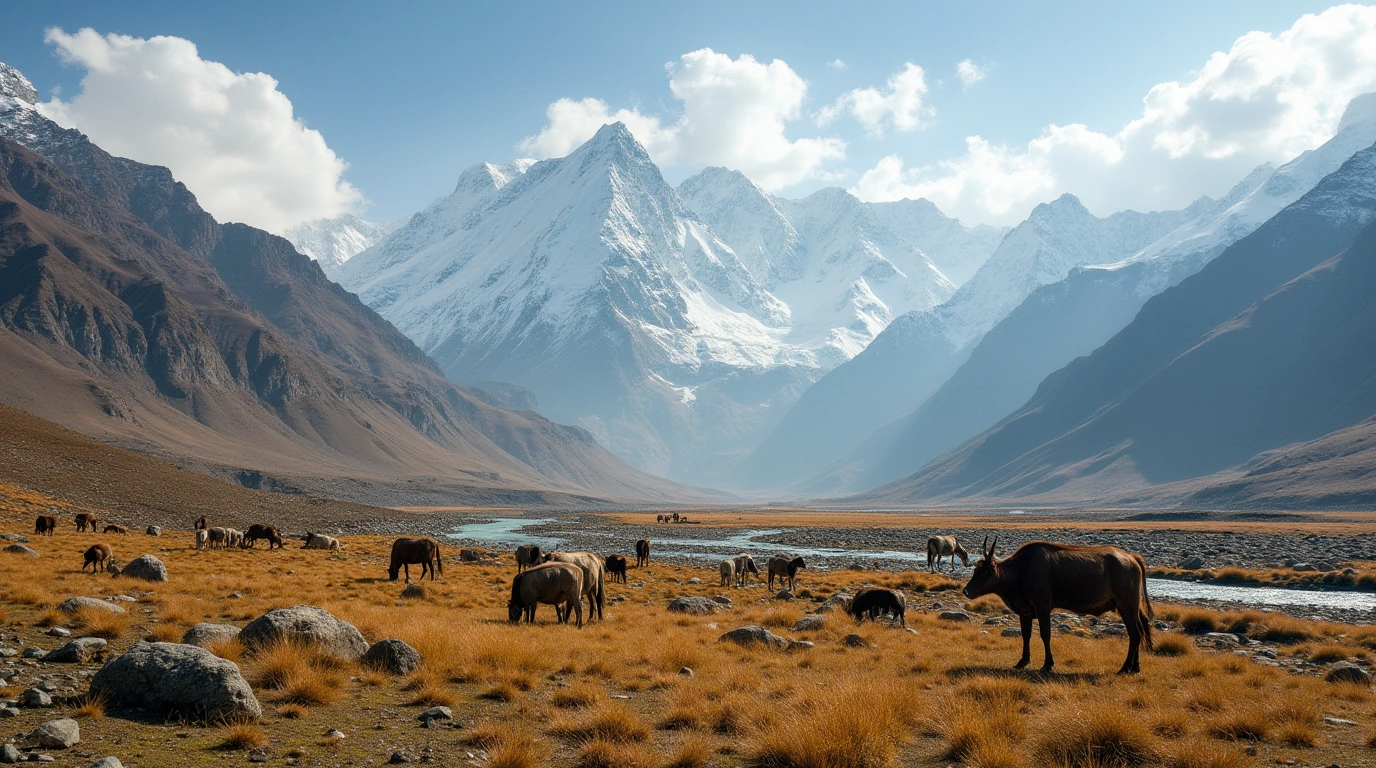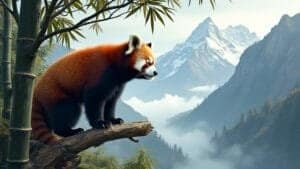Forest fragmentation poses one of the most serious threats to red pandas in the wild, disrupting their movement, access to food, and chances of survival. But how does forest fragmentation impact red panda habitats? As human activities like road construction, agriculture, and livestock grazing carve up previously continuous forests, red pandas are left navigating isolated patches of habitat. This fragmentation restricts their ability to forage, find mates, and maintain genetic diversity
In this article, we’ll examine how roads and infrastructure interrupt red panda movement, how fragmentation affects bamboo availability, and the behavioral changes red pandas adopt in fragmented areas. We’ll also explore rising mortality risks, loss of genetic variability, and conservation efforts focused on reconnecting and protecting their critical habitats
Effects of Forest Fragmentation on Red Panda Habitats

Red pandas are solitary and territorial animals whose survival depends heavily on access to large, continuous tracts of high-altitude forest. Fragmentation of these forests—primarily due to expanding human settlements, infrastructure projects, and agricultural activity—has emerged as one of the leading threats to red panda populations
When forests are broken into smaller, isolated patches, the availability of food, nesting sites, and safe corridors for movement is severely compromised. Understanding these specific impacts is key to conserving and managing red panda habitats effectively across their natural range in the Himalayas and southwestern China
Restricted Movement and Habitat Isolation
Red pandas naturally traverse extensive areas in search of food, mates, and shelter. However, when their forest habitat is fragmented, this movement is constrained by human-made barriers and unsuitable terrain. Studies using GPS telemetry, such as the one published in Ecology and Evolution (2021), reveal that red pandas in fragmented landscapes have smaller home ranges and exhibit limited dispersal capabilities compared to those in contiguous forests. They are less likely to cross open land, which exposes them to predators, poaching, and human-related dangers
This restricted movement has serious biological consequences. It can lead to isolated subpopulations with limited genetic exchange, reducing overall genetic diversity and increasing the species’ vulnerability to disease and environmental stress. Furthermore, fragmentation can separate red pandas from critical resources such as seasonal bamboo patches or secure nesting sites, which are not evenly distributed across fragmented landscapes
Role of Roads and Infrastructure in Habitat Disruption
Roads, utility lines, and tourism infrastructure are among the most damaging forces contributing to forest fragmentation in red panda habitats. In Nepal and northern India, for example, new road construction projects often slice through critical red panda corridors. These developments not only remove mature trees but also create “edge effects”—the sudden transition between forest and cleared land—that disrupt microclimates and increase exposure to invasive species
A 2021 report by the Red Panda Network highlights that red pandas tend to avoid areas within 300 meters of roads. Camera trap studies also show reduced red panda activity in regions with high levels of infrastructure density. These avoidance behaviors result in habitat underutilization and force pandas into less optimal areas, often increasing intra-species conflict and competition for limited resources
Vehicle traffic poses an additional risk. In areas like Ilam and Taplejung in eastern Nepal, there have been recorded instances of red panda roadkill, an issue that becomes more prevalent as transportation networks expand into remote forest regions. These risks are exacerbated in winter when red pandas move downslope and come into closer proximity with roadways
Bamboo Scarcity Due to Fragmented Ecosystems
Bamboo, the staple of the red panda diet, is highly sensitive to environmental conditions and human interference. When forests are fragmented, the microhabitats that support bamboo growth are often the first to be disturbed. Fragmentation not only reduces the overall area where bamboo can grow but also disrupts the specific light, soil, and moisture conditions required for its regeneration
Moreover, fragmentation often leads to edge effects that dry out bamboo stands or make them more accessible to livestock, which trample the young shoots. According to field reports from the Red Panda Network and Ohio State’s science journal, livestock grazing in fragmented regions significantly reduces bamboo density and biomass. Without adequate bamboo, red pandas may be forced to range farther than normal—sometimes outside forested areas—placing them at greater risk of predation and human conflict
This loss of food availability also impacts breeding success. Lactating females need high volumes of bamboo, and if their home range no longer includes sufficient bamboo stands, reproductive rates can drop sharply
For further exploration of habitat fragmentation effects on red panda behavior and movement, this detailed GPS telemetry study published by PMC offers valuable insight into how fragmentation alters their home range and activity patterns
Behavioral and Biological Consequences of Fragmentation

Forest fragmentation doesn’t just reduce the size of red panda habitats—it changes the way these animals behave, interact, and survive in their environment. As forests are increasingly carved up by human activities, red pandas are forced to adjust their natural patterns, often in ways that compromise their health and survival
These behavioral and biological changes are well-documented through long-term monitoring and GPS telemetry studies, which show clear alterations in movement, foraging strategies, stress responses, and population genetics in fragmented habitats
Behavioral Changes in Fragmented Habitats
In fragmented landscapes, red pandas adapt their daily routines and movement strategies to avoid humans and other threats. A study published in Movement Ecology (2021) found that red pandas in smaller forest patches moved more quickly and frequently during nighttime, presumably to reduce exposure to human activity and predators. This shift to more nocturnal behavior represents a deviation from their natural crepuscular rhythm, where they are typically most active at dawn and dusk
Additionally, these pandas often display higher stress levels, as indicated by changes in activity intensity and reduced resting time. This heightened stress is believed to correlate with the need to travel longer distances in search of food or suitable shelter in a fragmented landscape. With fewer secure resting spots and increased exposure to disturbance, their energy expenditure rises while foraging efficiency drops
Avoidance behavior is another hallmark of pandas in fragmented zones. Studies from eastern Nepal have shown that red pandas tend to avoid habitat patches under 10 hectares in size or those located near roads and settlements. This effectively reduces their usable habitat, leading to overcrowding in remaining suitable patches and increased territorial disputes
Increased Mortality Risks and Predator Exposure
Fragmented forests expose red pandas to heightened mortality risks, both direct and indirect. Direct threats include vehicle collisions—particularly in areas where roads bisect traditional migration paths—and predation by dogs that accompany livestock into forested areas. Domestic dogs are an under-recognized but serious threat to red pandas; they can attack cubs or transmit diseases such as canine distemper virus, which is lethal to many wild mammals
In addition, open land between forest patches increases vulnerability to aerial predators and terrestrial carnivores. Natural forest cover usually provides dense foliage for red pandas to escape into, but these fragmented regions offer limited refuge. Cubs are especially vulnerable during the first few months after birth when their mobility is limited, and mothers must leave dens to forage in unsafe zones
Indirect threats include food scarcity and dehydration, which become more common as bamboo stands shrink and water sources dry up due to edge effects and altered microclimates. The cumulative impact of these stressors contributes to lower reproductive success and higher infant mortality rates
A 2018 study published in Global Ecology and Conservation confirmed that red panda populations living in fragmented regions had significantly lower survival rates than those in contiguous forests. The data indicated that red pandas in fragmented landscapes may be up to 60% more likely to die prematurely, particularly during winter, when food is scarce and exposure risks are high
Genetic Impacts of Habitat Isolation
As forest patches become smaller and more isolated, red panda populations suffer from genetic bottlenecks—a reduction in genetic variation due to inbreeding within isolated groups. Genetic diversity is vital for resilience to disease, adaptation to environmental changes, and long-term species viability. Habitat fragmentation breaks the natural flow of genes between populations, and without viable wildlife corridors, red pandas cannot find mates outside of their immediate population
Recent genetic studies, including those supported by the Smithsonian’s National Zoo and Conservation Biology Institute, have revealed that red panda populations in fragmented habitats show signs of decreased heterozygosity—a key indicator of genetic health. This puts them at a higher risk for hereditary diseases and reduces their capacity to adapt to changing conditions, such as shifts in climate or the emergence of new pathogens
Conservation biologists emphasize the importance of reestablishing habitat connectivity to facilitate gene flow. Without it, the isolated populations may decline faster even if protected from direct human threats like poaching. Readers interested in broader implications of habitat fragmentation on wildlife can find foundational ecological concepts in this Woodland Trust article on habitat fragmentation, which contextualizes the red panda’s plight within a global conservation framework
Human Influence and Conservation Solutions

As habitat fragmentation accelerates due to increasing human pressure, targeted conservation strategies are essential to preserve red panda populations. From livestock encroachment to land-use changes, anthropogenic factors are central to the fragmentation problem. However, effective solutions—ranging from policy reforms to grassroots conservation programs—can help restore habitat continuity and mitigate the negative effects of fragmentation on red pandas
Livestock Grazing and Habitat Degradation
In the red panda’s Himalayan range, livestock grazing is a persistent and often underreported driver of forest degradation. Herders bring cattle, goats, and yaks into red panda habitats, particularly during dry seasons when forage is scarce in lower altitudes. These animals trample bamboo, the mainstay of red panda diets, and prevent its natural regeneration. Bamboo is especially vulnerable to overgrazing because its shoots are delicate and slow to regrow once damaged
Additionally, herders frequently cut trees for firewood and build temporary shelters inside forest patches. These activities not only fragment the habitat further but also reduce the number of hollow trees and dense undergrowth necessary for red panda nesting and shelter. The presence of domestic dogs used to guard livestock also introduces a major threat, as these animals can attack red pandas or transmit diseases like rabies and canine distemper
According to Ohio State University’s science publication, overgrazing has a statistically significant effect on the decline in red panda sightings in heavily grazed zones. These areas exhibit markedly reduced bamboo density and increased signs of red panda displacement
Conservation Strategies for Fragmented Forests
To counter the effects of forest fragmentation, conservationists and local governments are implementing a mix of landscape-scale and community-based strategies. One of the most effective approaches is the creation of wildlife corridors—stretches of forest or reforested land that connect isolated habitat patches. These corridors enable red pandas to safely move between forest fragments, facilitating access to food, nesting sites, and mates, while reducing mortality from road crossings or predator exposure
Another proven method is the establishment and expansion of protected areas. In regions like eastern Nepal and Sikkim, national parks and community-managed forests have been designated as red panda sanctuaries, often supported by organizations like the Red Panda Network. These protected areas typically restrict livestock grazing, prohibit tree cutting, and promote bamboo conservation efforts
Community involvement is also crucial. Programs that provide alternative livelihoods—such as ecotourism, handicraft production, or sustainable farming—help reduce local reliance on forest resources. Forest Guardian programs, for example, train local people to monitor red panda habitats, report threats, and educate their communities about the species’ ecological importance
Policy-level initiatives are increasingly incorporating fragmentation mitigation into national conservation plans. In India and Bhutan, conservation action plans now include specific goals related to maintaining habitat connectivity for red pandas and other highland species. These include zoning regulations for road construction, grazing limits near core red panda zones, and bamboo replanting projects
One of the most accessible and informative resources on red panda conservation is the IFAW’s red panda page, which outlines both threats and community-driven solutions that are actively restoring fragmented ecosystems












